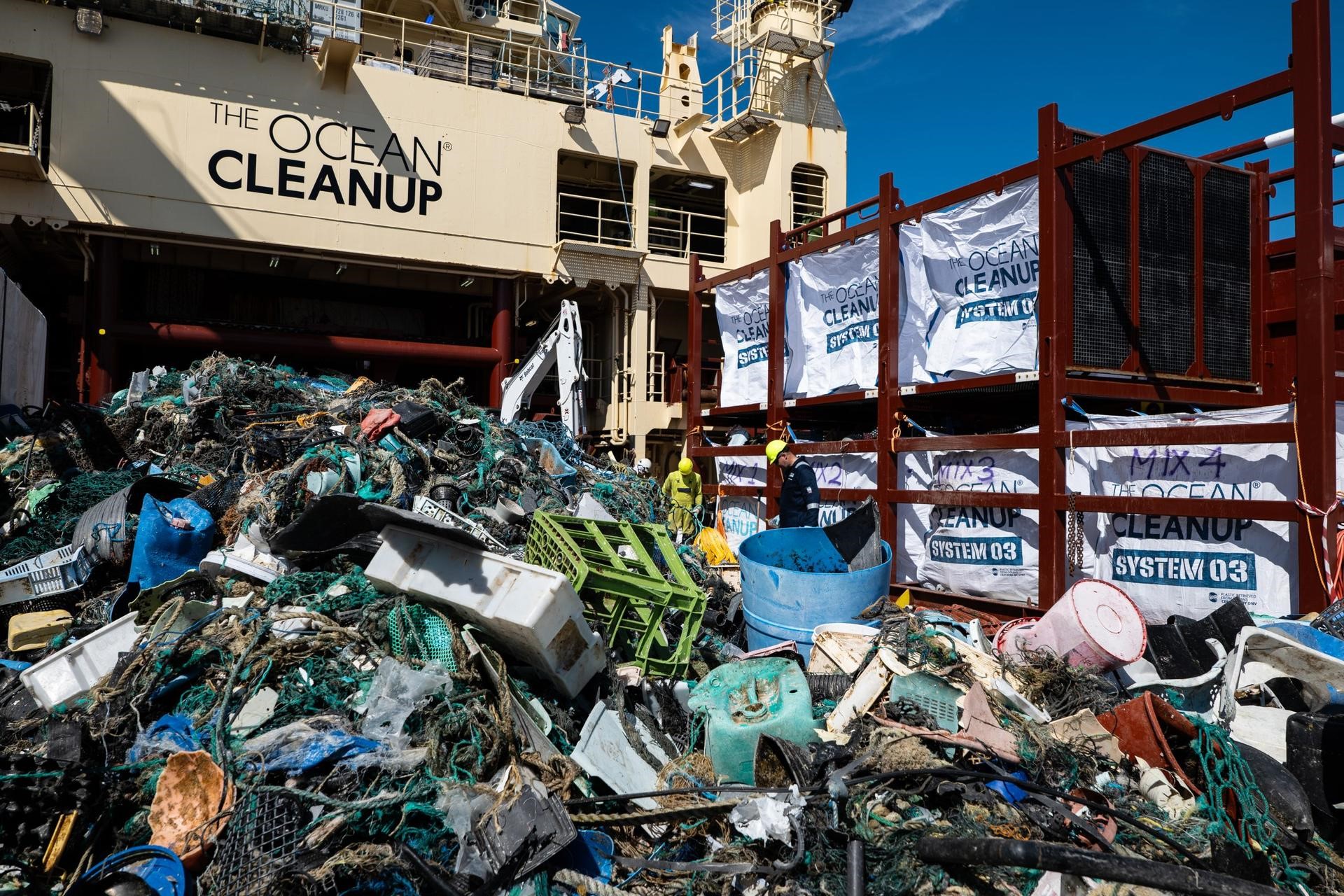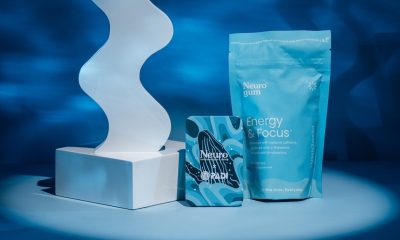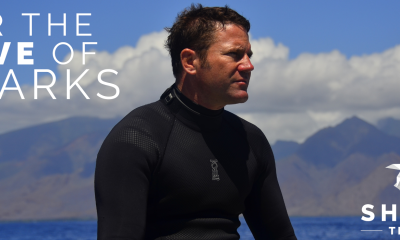News
Paul Toomer: Wreck Head

Part 2 – Laying Line
I can clearly remember my first attempt at “Laying Line”. I think I can still hear my instructor roaring with laughter as I knitted myself tighter and tighter to the wreck. I felt like Spider Man gone wrong! In all honesty the laughs started during the dry training sessions where I walked into a tree about 40 times while simulating a lost light drill. Now unless you are already wreck or cave trained you probably will not have a clue what I’m on about, so I shall attempt to enlighten you.
Let’s get serious for a moment ok? As I discussed last month wreck diving can be the most incredible diving ever while all is good, but as soon as it goes wrong you can find yourself standing at the Entrance to Hades within seconds. It’s just amazing what that horrible little Murphy fella will throw at you as soon as something even thinks about going wrong. I can’t tell you the amount of times that when struggling to spot a good place to tie the line, I suddenly find silt percolating down onto me to make my seemingly simple task nigh on impossible.
In my humble opinion, laying line (after buoyancy control) is the most important skill a wreck diver can learn. It seems amazing that it’s 2014 and we’re still relying on a ‘bit of string’ to safely take us home to our loved ones. For the average diver, there is no Sat Nav for us I’m afraid unless the two Toms have designed something while my back was turned.
Why don’t we begin by looking at line laying equipment selection? I am a ‘spool’ man and my mate Al is a ‘reel’ man! He will be so chuffed at that comment. So why reels and why spools? Reels generally are able to carry more line and are therefore brilliant for long penetrations. Using spools for long runs requires joining them together which is simple enough but does take up time and as we all know, time is precious underwater. Reels however are prone to problems, mostly due to user error but sometimes simply because they are more complex than spools. I bet you can’t believe I am saying that reels are complex, but they are. Reels have an axle, a grip, a winding knob, a frame, a clutch, a gate which the line flows through and also some form of clip to secure them to your rig. A spool is….well it’s a spool. Just that. No axle to wrap the line around, no winder or gate or piston clip to jam the line around. Theoretically, they should be problem free. That is unless your name is Adam Raman or Digby Crowther (fame at last boys), the only two people in existence that can jam a spool anytime, anywhere.
Picking your equipment as we all know is a very difficult task. Get it wrong and you will not only waste your hard earned money but you may end up putting your safety at risk. Get it right and you will taste a little slice of heaven every time you use it. With that in mind I recommend you get a proper dedicated wreck/cave reel for penetration. These are purpose built for the sole task of making line laying as easy and fluid as possible. Using a standard SMB reel is ok for entry level wrecking but once you are at an advanced level they will show themselves as being inferior for the job. You have to depress a clutch while reeling out and when reeling back in you have a ratchet fighting your every turn. Wreck reels have an adjustable clutch that is set by the diver so the line comes off the reel smoothly; the diver doesn’t need to hold anything down to let line out or reel it back in. Nice hey?
Most major manufacturers make quality primary (100 metres plus) and backup (50 metre) penetration reels. They are not cheap but they will ooze quality. Regarding spools, you want 40 to 50 metre length spools, preferably with a large bore centre so that you can use them with thick gloves. All clips on spools and reels MUST be stainless steel, nothing else will do. Remember, brass rhymes with arse!!!
I always have a good 150 metre wreck reel and a few spools on me whenever I wreck dive so I have every option available. Why so much gear? The rule to carrying lines is really simple. You can carry as many penetration lines as you deem neccessary for the particular dive you are attempting but You MUST always have an emergency (50 metre or so) reel/spool. This emergency line has many uses. If you lose your main line it can be used to help you relocate it. If you lost a team member you can use it to search for them. If you needed to make an emergency exit, this line may help you get there.
The emergency reel is never deployed to increase penetration distance. It has one use and one use only – it’s a last attempt life line.
Hopefully now you will be able to pop into your local dive emporium and purchase yourself some Gucci wrecking lines. I guess the next thing we need to do is learn how to lay the damn stuff so we don’t look like idiots the next time we are trying to do a push through the Stanegarth at Stoney Cove!!! Perhaps though, you need to wait for the next installment of Wreck Head otherwise I will have nothing to write about!
Paul is the Director of Training at RAID. To find out more about the courses that RAID offers, visit www.diveraid.com.
Main photo: Jason Brown
Blogs
The Ocean Cleanup Breaks 10,000,000 KG Barrier

The Ocean Cleanup, the global non-profit project, has removed a verified all-time total of ten million kilograms (22 million lbs.) of trash from oceans and rivers around the world – approximately the same weight as the Eiffel Tower.
To complete its mission of ridding the oceans of plastic, The Ocean Cleanup uses a dual strategy: cleaning up the Great Pacific Garbage Patch (GPGP) to remove the plastic already afloat in the oceans, while stopping the flow of plastic from the world’s most polluting rivers.
Through cleaning operations in the GPGP and in rivers in eight countries, the cumulative total of trash removed has now surpassed ten million kilograms. This milestone demonstrates the acceleration of The Ocean Cleanup’s impact, while underlining the astonishing scale of the plastic pollution problem and the need for continued support and action.
While encouraging for the mission, this milestone is only a staging point: millions more tons of plastic still pollute our oceans and The Ocean Cleanup intends to continue learning, improving and innovating to solve this global catastrophe.
This announcement comes as governments from around the world meet to continue negotiations to develop a new legally binding instrument to end plastic pollution at INC4 in Ottawa, Canada. Representatives of The Ocean Cleanup will be in attendance and the organization will be urging decision-makers to collaborate towards a comprehensive and ambitious global treaty which addresses plastic at all stages of its life cycle and in all marine environments worldwide, including in areas beyond national jurisdiction.
It is encouraging to see that the need for remediation is reflected in the various options for potential treaty provisions. It is essential that the final treaty contains clear targets for the remediation of legacy plastic pollution, and reduction of riverine plastic emissions.
Tackling plastic pollution requires innovative and impactful solutions. The treaty should therefore incentivize the innovation ecosystem by fostering innovations that make maximal use of data, technology and scientific knowledge – such as those designed and deployed by The Ocean Cleanup.
‘After many tough years of trial and error, it’s amazing to see our work is starting to pay off – and I am proud of the team who has brought us to this point.’ said Boyan Slat, Founder and CEO of The Ocean Cleanup. ‘While we still have a long way to go, our recent successes fill us with renewed confidence that the oceans can be cleaned.’
The Ocean Cleanup was founded in 2013 and captured its first plastic in 2019, with the first confirmed catch in the GPGP coming soon after the deployment of Interceptor 001 in Jakarta, Indonesia. After surpassing one million kilograms of trash removed in early 2022, the non-profit project has since progressed to the third iteration of its GPGP cleaning solution, known as System 03, and a network of Interceptors currently covering rivers in eight countries, with more deployments set for 2024.
About The Ocean Cleanup
The Ocean Cleanup is an international non-profit organization that develops and scales technologies to rid the world’s oceans of plastic. They aim to achieve this goal through a dual strategy: stemming the inflow via rivers and cleaning up the legacy plastic that has already accumulated in the ocean. For the latter, The Ocean Cleanup develops large-scale systems to efficiently concentrate the plastic for periodic removal. This plastic is tracked and traced through DNV’s chain of custody model to certify claims of origin when recycling it into new products. To curb the tide via rivers, The Ocean Cleanup has developed Interceptor™ solutions to halt and extract riverine plastic before it reaches the ocean. Founded in 2013 by Boyan Slat, The Ocean Cleanup now employs a broadly multi-disciplined team of approximately 140. The foundation is headquartered in Rotterdam, the Netherlands.
For more information, visit: theoceancleanup.com and follow @theoceancleanup on social media.
Marine Life & Conservation
Steve Backshall to headline Shark Trust’s flagship event: For the Love of Sharks

Join a host of amazing, shark loving, speakers including Steve Backshall and the Shark Trust team for an evening celebrating shark conservation at the Royal Geographical Society in London this November.
Date: 29th November 2024
Time: 6-10pm
Location: Royal Geographical Society, London
Tickets: https://www.sharktrust.org/Event/flos24
The event will be a celebration of all things shark. Those lucky enough to get hold of tickets will hear from engaging guest speakers with a passion for sharks.
The line-up includes (*subject to change if unforeseen circumstances arise)
Steve Backshall: One of television’s busiest presenters, BAFTA award-winning wildlife expert Steve has been passionate about the wild world ever since he was young.
Steve’s impressive TV career has taken him all around the world, investigating a wide array of species and environments. Steve has filmed over 100 hours of children’s wildlife programmes with the BAFTA award winning Deadly 60 franchise and recently, with Sky Nature, for his new series ‘Whale with Steve Backshall’. He has been a patron for the Shark Trust for 10 years.
Simon Rogerson: is a photojournalist specialising in natural history, diving and the sea.
He is editor of SCUBA magazine, the official journal of the British Sub-Aqua Club. Simon started his career as a crime reporter but gravitated towards his ‘less depressing’ interest in underwater exploration, joining the staff of DIVE magazine in 1999. In 2005 he was named ‘Editor of the Year’ in the PPA’s Independent Publishing Awards. Simon also works as a freelance writer, contributing frequently to the Sunday Times and Telegraph, in addition to BBC Wildlife, Esquire, and a host of international diving magazines. He is the author of a book, Dive Red Sea, published by Ultimate Sports. Now based in Berkshire, Simon has been a Patron of the Shark Trust for 20 years.
More speakers to be announced soon. Head to the Shark Trust website to learn more.
The evening will also allow guests the final chance to see the Oceanic 31, shark art exhibition. Some of the artwork will be auctioned/raffled at the event, while the rest will be auctioned online to raise money for the Shark Trust Oceanic Programme.
For the Love of Sharks is an evening with something for everyone who is interested and fascinated by sharks. Join the Shark Trust, their Patrons, Trustees and Staff, along with a host of supporters for this celebration of shark conservation.
For more information or to buy a ticket: https://www.sharktrust.org/Event/flos24
-

 News3 months ago
News3 months agoCapturing Critters in Lembeh Underwater Photography Workshop 2024: Event Roundup
-

 Marine Life & Conservation Blogs3 months ago
Marine Life & Conservation Blogs3 months agoCreature Feature: Swell Sharks
-

 Blogs2 months ago
Blogs2 months agoMurex Resorts: Passport to Paradise!
-

 Blogs2 months ago
Blogs2 months agoDiver Discovering Whale Skeletons Beneath Ice Judged World’s Best Underwater Photograph
-

 Gear Reviews3 weeks ago
Gear Reviews3 weeks agoGEAR REVIEW – Revolutionising Diving Comfort: The Sharkskin T2 Chillproof Suit
-

 Gear Reviews3 months ago
Gear Reviews3 months agoGear Review: Oceanic+ Dive Housing for iPhone
-

 Marine Life & Conservation2 months ago
Marine Life & Conservation2 months agoSave the Manatee Club launches brand new webcams at Silver Springs State Park, Florida
-

 News2 months ago
News2 months agoPADI Teams Up with Wellness Brand Neuro to Drive Ocean Change and Create a Blue State of Mind





















